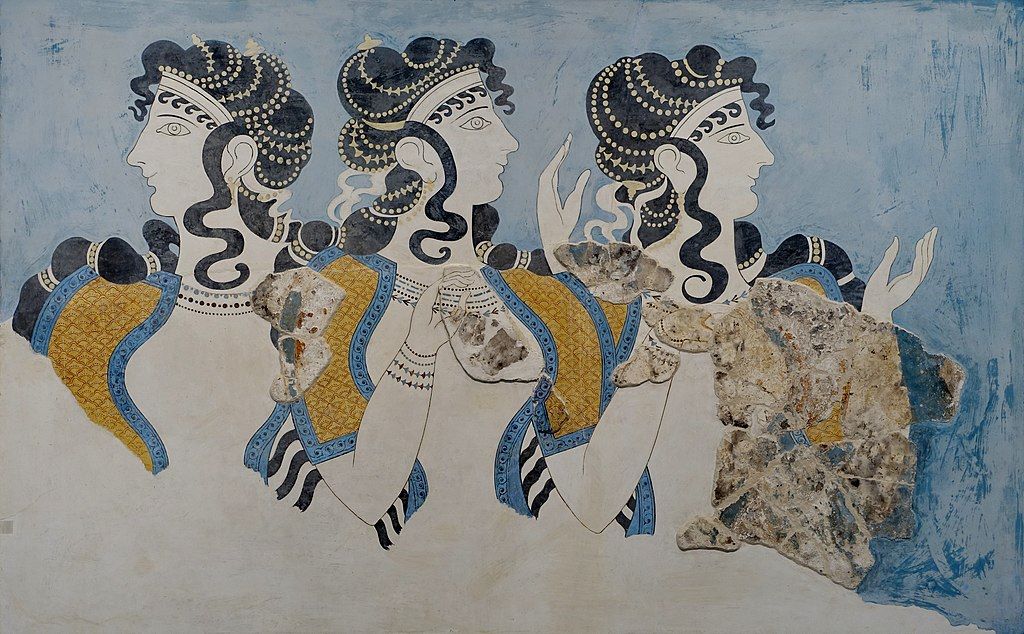The Minoan Civilization was a Bronze Age civilization centered on the island of Crete, located in the Mediterranean Sea. This island was likely settled by populations from mainland Greece and Asia Minor. Flourishing from around 2700 to 1450 BC, the Minoans established one of the earliest advanced societies in Europe. Their significant contributions to art, architecture, and trade are pivotal in the development of early European history. Understanding the Minoan civilization helps us appreciate the complexities and achievements of ancient cultures that shaped human civilization.
Discovery of the Minoan Civilization
The discovery of the Minoan Civilization was markedly influenced by the pioneering efforts of Sir Arthur Evans, who began his excavations on the island of Crete at the close of the 19th century. Inspired by the legendary tales of King Minos and spurred by the archaeological successes of Heinrich Schliemann, who had uncovered the sites of Troy and Mycenae, Evans sought to unravel similar mysteries in Crete. Interestingly, Schliemann had also shown interest in the area around Knossos but was unable to acquire the land for excavation. Evans, however, succeeded where Schliemann could not and initiated his digs which would soon stun the world with their revelations.

Upon his arrival at Knossos, Evans unearthed the expansive remains of a large palace, which he deduced to be the central hub of a hitherto unknown civilization. This palace was just one of several similar structures across Crete, all sharing a common architectural blueprint, with the one at Knossos being the largest. Naming this civilization after the legendary king Minos, Evans’s discoveries at Knossos provided crucial insights into the advanced urban and cultural complexities of the Minoans.
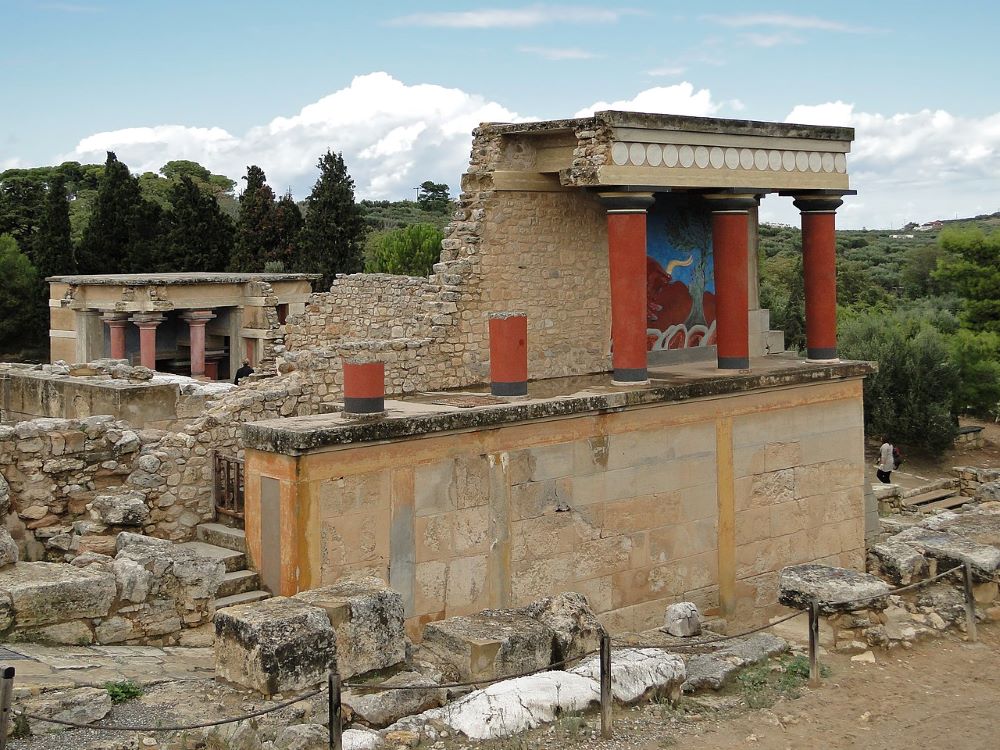
However, Evans’s approach to restoration has been criticized; his reconstructions, often based on speculative interpretations like the three-story layout of the palace, were made with permanent materials like cement, making future corrections almost impossible. This practice has led to ongoing debates about the accuracy of his restorations and has influenced modern archaeological methods which now discourage such irreversible interventions.
Achievements of the Minoan Civilization
The Minoan civilization, predominantly centered around the palace city of Knossos on the island of Crete, is renowned not only for its architectural and cultural advancements but also for its remarkably peaceful society. Unlike many contemporary civilizations, there is no evidence to suggest that the Minoans engaged in warlike activities or had any military organization. This absence of fortified structures or war relics suggests that the Minoans possibly enjoyed a period of peace and stability, which facilitated their focus on development and arts.
The palace at Knossos, built on Kefala Hill during the early second millennium BCE, was the heart of Minoan civilization and a marvel of urban planning. It was equipped with an advanced infrastructure that included sophisticated drainage systems, roads, and warehouses, all designed to support an extensive trading network. These features, coupled with the equitable structure of their housing—showing little distinction between the dwellings of the rich and the common workers—imply a society where wealth was potentially shared more evenly, perhaps reflecting a uniquely cooperative social system.
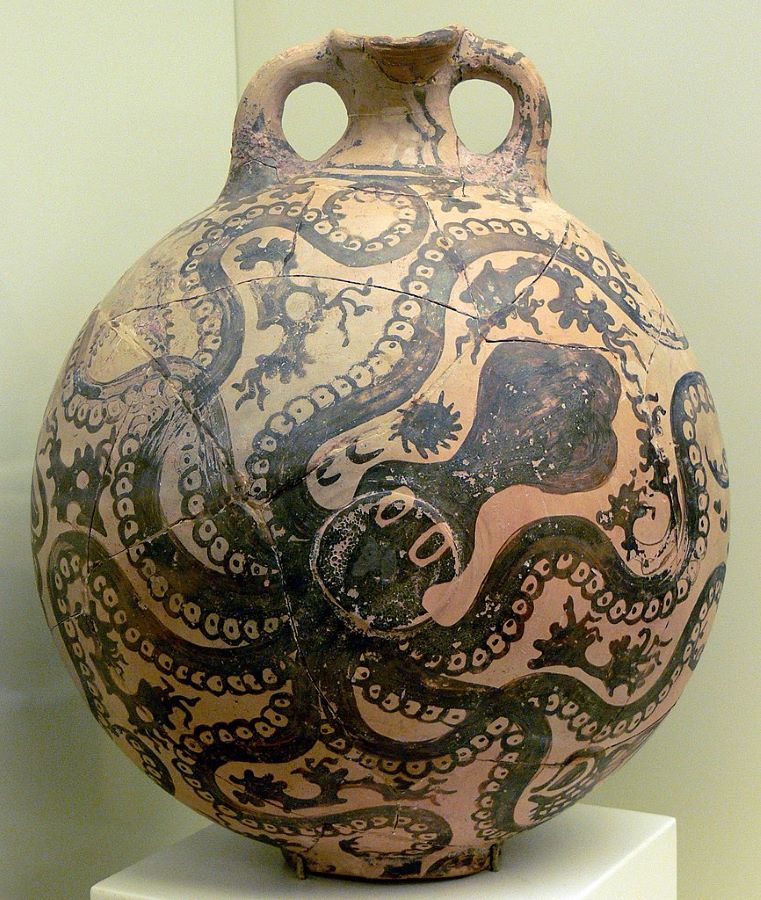
Artistically, the Minoans were pioneers, with their civilization producing vibrant frescoes and intricately designed pottery that illustrated aspects of their daily life, such as fishing, trading, and religious ceremonies. These artworks are some of the first known examples of art created for aesthetic enjoyment rather than for functional or religious purposes. This cultural wealth not only enriched their society but also influenced and was propagated through their interactions with other regions, including mainland Greece, via the Mycenaeans.
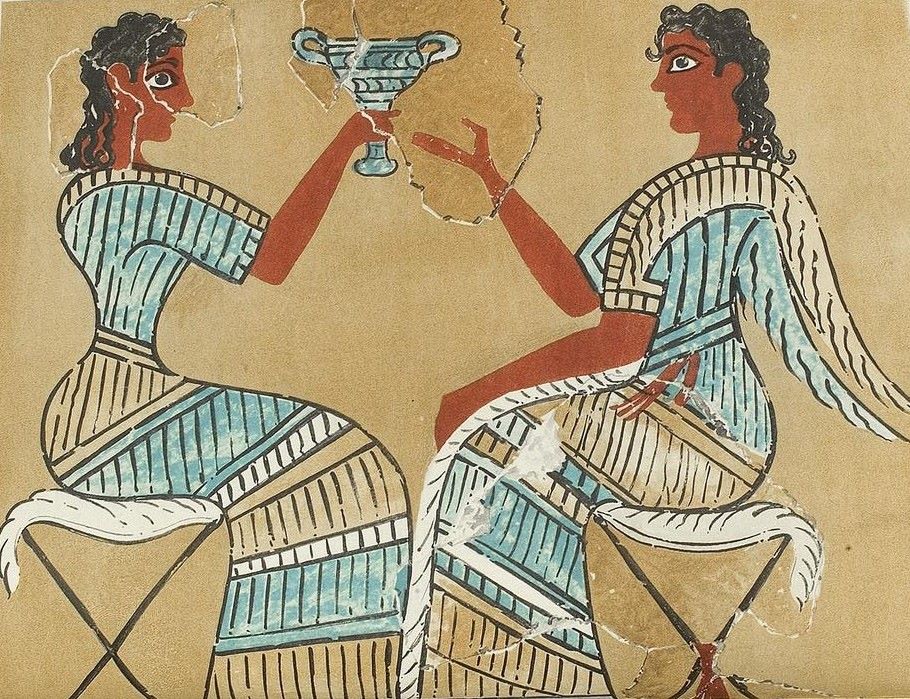
The Minoans were among the earliest civilizations to develop a form of writing, which serves as a testament to their advanced societal organization and cultural complexity. The script known as Linear A, still undeciphered, highlights their innovative spirit and suggests a sophisticated administrative system that likely facilitated their extensive trade networks and bureaucratic processes. This was succeeded by Linear B, adopted and adapted by the Mycenaeans, whose decoded texts provide valuable insights into the later stages of Aegean civilization and further attest to the Minoans’ influential legacy in the region.
Minoan influence extended far beyond Crete, facilitated by their advanced mercantile navy, which is considered one of the most sophisticated of its time. Through trade routes that reached as far as Turkey, Cyprus, Egypt, Afghanistan, and even Scandinavia, the Minoans exchanged goods like copper, ivory, gold, and precious stones, embedding themselves as a central node in the ancient trading world. This extensive network not only spread their cultural influences but also brought a wealth of resources that furthered the prosperity of Minoan society, showcasing their significant role in shaping the Mediterranean’s historical landscape.
Decline and Disappearance of the Minoan Civilization
The fall of the Minoan Civilization is a topic of significant debate among scholars, with no consensus on a singular cause. It appears that a series of calamities, both natural and human, precipitated its decline. The island of Crete, being geologically active, faced several seismic events over its history. One of the most pivotal of these was the volcanic eruption on the nearby island of Thera (modern-day Santorini).
This catastrophic event around 1628 BCE is believed to have triggered a massive tsunami that devastated Minoan Crete, profoundly disrupting the civilization’s infrastructure and economy. The aftermath of this eruption, with evidence suggesting vast ash deposits and a subsequent tsunami, mirrors the devastation found in modern events like the 1883 eruption of Krakatoa.
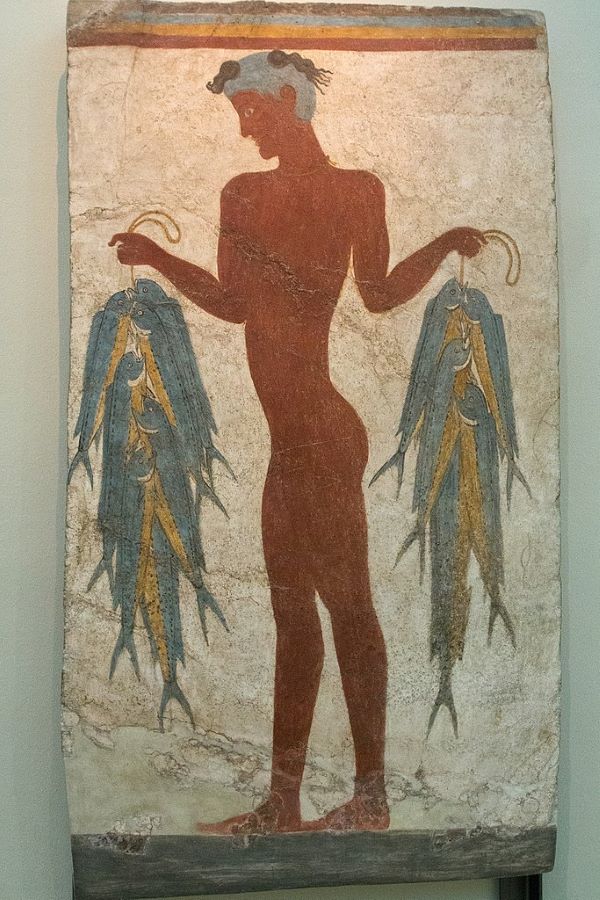
Alongside natural disasters, there was also a significant human element to the Minoan decline. By around 1450 BCE, archaeological evidence indicates a shift in cultural patterns in Crete. The emergence of Linear B script, which was used by the Mycenaeans, points to a possible conquest or at least cultural assimilation by the Mycenaeans, who were then rising as a dominant power in the region.
This period saw a transition in art and pottery styles, with an increased depiction of warfare and a shift in weaponry and tools that were not of Minoan origin. Such changes suggest that the Minoans were either conquered or heavily influenced by mainland Greeks, particularly the Mycenaeans. The strategic importance of Crete in the Mediterranean would have made it a valuable asset for any rising power, providing further motive for Mycenaean interest and intervention.
This combination of catastrophic natural events and gradual Mycenaean takeover likely led to the destabilization and eventual absorption of Minoan society into the broader Mycenaean culture. The exact nature and sequence of these events remain a matter of historical inquiry, but it is clear that the convergence of environmental and political forces played a critical role in the decline of one of the most artistically and architecturally advanced civilizations of its time.
Historical Challenge: Can You Conquer the Past?
Answer more than 18 questions correctly, and you will win a copy of History Chronicles Magazine Vol 1! Take our interactive history quiz now and put your knowledge to the test!

